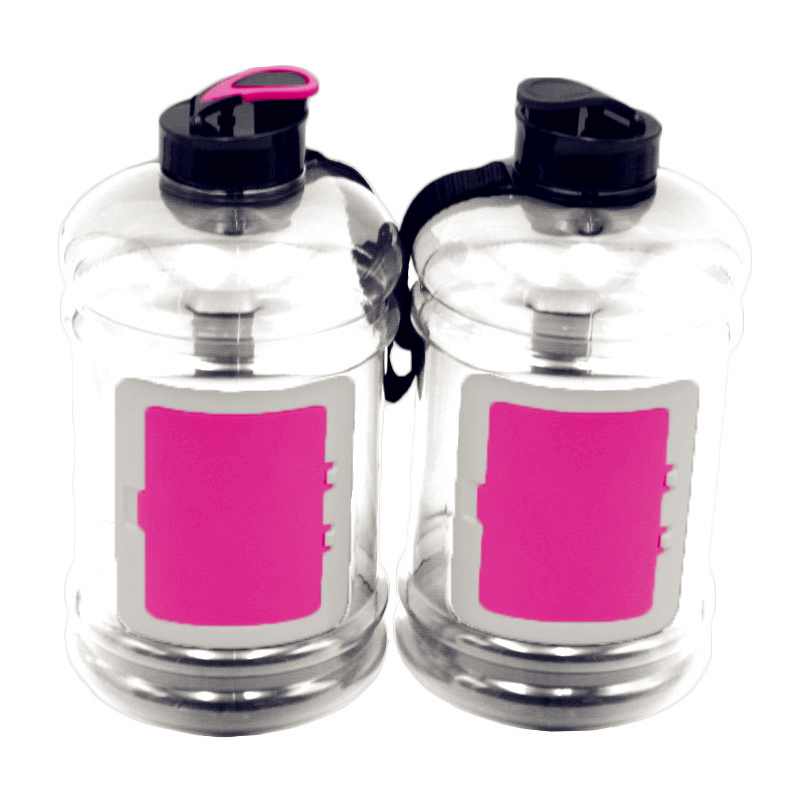2.2L Sport Gym PETG Water Bottle With Side Handle and Wallet
2.2L Sport Gym PETG Water Bottle With Side Handle and Wallet
- Detail
- Parameters
- Review
2.2L Sport Gym PETG Water Bottle With Side Handle and Wallet
Packaging & Delivery
Packaging Details:
Packing:24pcs/ctn
Meas:85x57x29cm
Nw/Gw:6.5/7.5Kgs
Delivery Detail:5-30 days
Product Description
Material:BPA Free PETG
Size:13.8x28cm
Capacity:2200ml
Weight:260g
More Photos
1.Are plastic water bottles safe?
While many plastic water bottles are labeled "BPA-free" and considered safe for limited use (like PET #1),
concerns exist. Heat, sunlight, and repeated use can cause leaching of chemicals like heavy metals,
hormone disruptors (including BPA alternatives), and even microplastics/nanoplastics. These particles,
found even in new bottled water, can be ingested with unknown long-term health effects.
Bacteria can also thrive in reusable plastic bottles, especially if not cleaned thoroughly.
To minimize risks, choose BPA-free, avoid heat, clean diligently, limit reuse of single-use bottles,
and consider alternatives like glass or stainless steel.
2.Are plastic water bottles recyclable?
Yes, the vast majority of plastic water bottles are designed to be recyclable, and many are made
from PET (Polyethylene Terephthalate) or HDPE (High-Density Polyethylene),
which are commonly accepted by recycling programs. You can usually identify the type
of plastic by the recycling symbol (a triangle with a number inside) on the bottom
of the bottle; #1 (PET) and #2 (HDPE) are widely recyclable.
3.What is advantage of plastic water bottles?
Plastic water bottles offer several advantages:
Lightweight and Portable: They are easy to carry around, making them convenient for on-the-go hydration, sports, and travel.
Affordable: Compared to bottles made of other materials like stainless steel or glass, plastic options are generally cheaper to produce and purchase.
Durable (to a degree): They are less likely to shatter upon impact than glass bottles, making them a safer choice in many situations.
Readily Available: Plastic water bottles are widely available in various sizes, shapes, and colors in most stores.
Recyclable: Many plastic water bottles are made from recyclable plastics like PET (#1) and HDPE (#2), contributing to resource conservation when properly recycled.
4.How do you clean a plastic water bottle?
To clean a plastic water bottle effectively:
Daily Rinse: After each use, empty the bottle and rinse it with warm water.
Wash with Soap: Use warm water and dish soap. For a thorough clean, use a bottle brush to scrub the inside, including the bottom and sides. Wash the lid and any straws separately.
Rinse Thoroughly: Ensure all soap residue is removed with clean water.
Air Dry: Allow the bottle and its parts to air dry completely, preferably upside down with the lid off, to prevent moisture buildup and bacterial growth.
5.Can you put hot water in a plastic water bottle?
Putting hot water in a plastic water bottle is generally not recommended due to the risk of chemical leaching.
Heat can cause the plastic to break down and release substances like BPA (if present), its alternatives (like BPS and BPF), and other chemicals into the water.
Even in BPA-free bottles, heat can accelerate the release of other potentially harmful chemicals.
Additionally, hot water can deform or weaken the plastic, especially in single-use bottles not designed for high temperatures.
For hot beverages, it's safer to use bottles made from stainless steel or glass,
which are more stable at higher temperatures and don't carry the same leaching risks.

